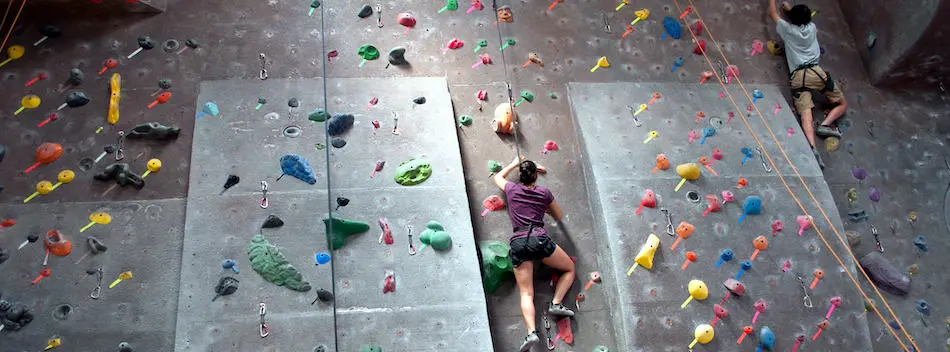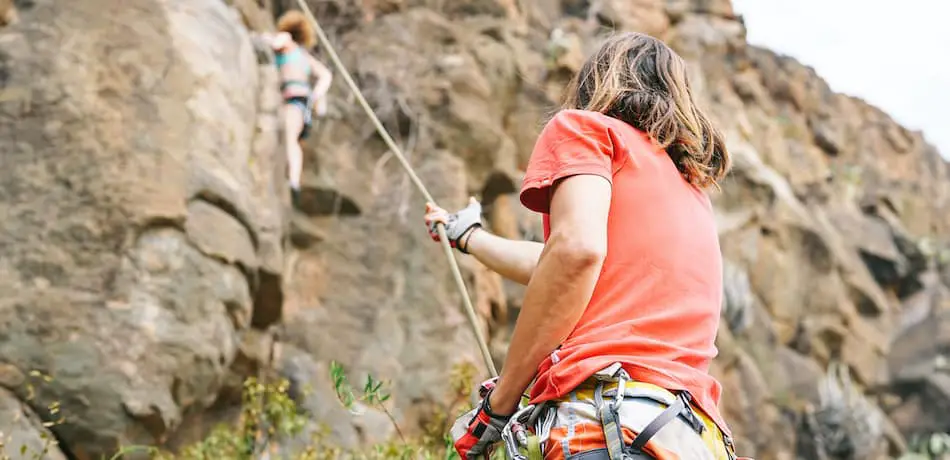
Climbing can be demanding both physically and mentally. However, despite the intensity, this activity avoids the joint-jarring results of high-impact sports such as plyometrics and jogging. Hence it begs the question: Can you climb at age 50?
It is possible to begin climbing at 50. You will need to be more careful when managing risk of injuries, but this should not prevent you from enjoying the sport.
This article will explore how to prepare your body for climbing, how advanced you can be if you start at 50, and popular resources for older climbers who have less risk when climbing as they are free from injuries such as:
- Ligament or tendon injuries
- Tissue damage, especially to soft tissue
- Muscle strain
- Reduced ranges of motion
If you have any of the following injuries above, please consult your doctor before climbing. These conditions can lead to critical injuries such as arthritis, meniscal tears, shoulder subluxation, and elbow tendonitis.
Climbing at 50: Physical Considerations

People who are 50 or above are more than capable of starting climbing. However, climbing is still a high-impact sport, and there are some physical considerations you should be aware of before you take up the sport.
This first thing to be aware of is that warming up is extremely important for injury prevention. A good warmup should take about 20 minutes; at least 10 of those should be spent without climbing at all.
There are some great resources out there on how to to warmup, but the important thing to consider is that you should be doing dynamic stretches, not static ones, and you want to get your body moving until you have a light sweat going.
After the climb, make sure to do some static stretches and cool-down activities; this will help stop you from getting sore.
Finally, it’s good to do some cross-training to prevent injuries. A few activities that will decrease risks, and potential healing time include:
- Mobility Work or Cross Training e.g. walking hip openers, thoracic spine windmills on the floor, and shoulder pass-throughs. For more information and examples click here. This will increase your ability to move your joints through the full range of motion with the highest degree of control.
- Dynamic 10 Minute Warm-up Routines will prevent muscle soreness, which is extremely common amongst beginners. Please leave static stretching for the end of the climb, and a great 4 minute warm-up includes:
- Start with Top Ropes Before Bouldering this way you do not fall very far if you let go. In addition it allows you to get a feel for rock climbing without many risks due to the use of safety ropes.
- Work Up Slowly by climbing a maximum of three times a week until your body no longer feels sore the day after for a week or two straight. Furthermore, if you decide to climb outdoors or boulder, you look for routes at the 5.7 level and slowly move to 5.1. Finally, have a seasoned climber join you, so they can correct your form and ensure you are not overextending yourself into dangerous territory.
With these tips you will decrease your risk of injuries, especially finger injuries which are the most common amongst climbers. Some examples include the A2 pulley strain or rupture, the collateral ligament strain and the flexor tendon tear.
Some general dangers of this activity to be aware of include, but are not limited to:
- Sprained ankles or knee injuries. However, this risk can be combated by top roping as the modern gyms have incredible shock-absorbing mats.
- Uneven shoulder and forearm strength, which can lead to tendonitis, muscle strain, poor posture, rotator cuff injuries and back pain.
- Muscle tightness which can constrict blood vessels and cause tension. This leads to headaches, migraines, and digestive issues.
How Old is Too Old?
Most top rope gyms offer programs and accept people ages 2-70 years old, so you will have another 20 years to train and improve your skills if you start at 50. However, there is no such thing as too old, as your performance is highly dependent on your physical health. According to Statista, roughly 8% of all regular independent climbers i.e. those who climb roughly 26 times a year, are over the age of 55. This shows that there is still a significant number of senior people who climb, and therefore age should not turn you away from this sport.
How Good Will A 50 Year Old Be at Climbing?

Reaching the highest levels at a recreational top rope facility is more than feasible for someone who starts when they are 50. As for bouldering, many people in their 50’s can reach a level with:
- low angle to vertical terrain
- access to small footholds and handholds
- climbs lasting under 3 hours
Some who are very dedicated to climbing and to improving their health may reach the following milestones, even if they had poor habits in their 30’s or youth:
- Summit at Mount Wellington (with an elevation of 1271 meters)
- Reach V6 levels of climbing. For context, the range starts at V0 (being the easiest) and V16 is the most difficult climb someone can do
- Bouldered for up to 6 hours
The reason for some of this success is due to the patience of older climbers. Often younger climbers will “send it”, give into peer pressure or overestimate their abilities. Hence, older climbers are less at risk of being reckless, which will decrease their injury rate and increase their longevity in the sport.
Popular Resources For Older Climbers
Having someone who can keep you accountable can never hurt, and a great resource for finding a climbing buddy would be to look for your state’s or province’s climbing association to see if they offer any programs for seniors. For example the Alberta Climbing Association provides a program called Senior Camp which is open to all individuals born in 2006 or earlier. If this does not exist where you live, another great avenue would be to join a local climbing group on Facebook or another social media platform.
Additionally, you may want to visit resources provided by MedlinePlus, a subsidiary of the National Institute of Health. This will provide you tools to check your health, video tutorials for stretches and therapies that help your body stay limber while increasing flexibility in your muscles.
